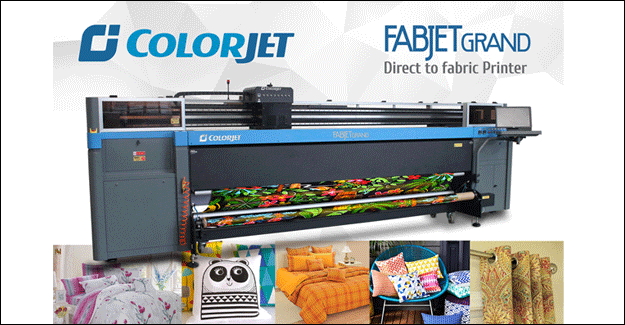Germany: Techtextil presents fibre-based innovations from medical engineering
Germany: Techtextil presents fibre-based innovations from medical engineering

Textile aids for bone fractures ans Strokes
Thomas Strobel, a futurologist of Munich, made the following prediction for the year 2050: human organs and other body parts will then be bred in large quantities from body’s own cells by means of appropriate carrier material. Several institutes involved in the textile research sector at Aachen, Denkendorf and Bönnigheim (both in Greater Stuttgart) and Dresden are making tremendous efforts for these visions of the future.
The latest developments in terms of materials and prototype ideas within the field of medical engineering will be presented at the Techtextil fair in Frankfurt taking place from May 4-7, 2015. About 400 exhibitors are expected in this sector. According to a statement of the German textile research Board of Trustees, the umbrella organisation of the German textile research, as many as 10 of 16 German textile research institutes are operating with growing potential in this field of research. Research is currently being undertaken into textile bone components and new therapeutic gloves for stroke patients.
Fibre research into bone and cartilage substitutes
Every visitor to a trade fair knows that two, three of even four fair days put stress on the bones. However research work in the field of textiles to be used in medicine for human and skeleton-forming supporting tissues is only astonishing to those who have underestimated the potential of fibre-based materials.
When looking behind the scenes of Dresden University of Technology and its institute for the development of textile machinery and high-duty materials where a working group called biological and medicinal textiles has been created, reveals that textile bone components do in fact exist. The working group leader Dr. Dilbar Aibibu explains that textile structures made of bio-compatible filaments are offering excellent prerequisites for carrier materials and implants in the field of regenerative medicine.
For the first time the scientist at the institute for the development of textile machinery and high-duty materials succeeded in producing ultrapure Chitosan multi-filaments that is to say fibre bundles extracted from conditioned shells of shrimps and crabs. These filaments are used for the development of different structures for scaffolds and implants. The institute has taken out a patent for a manufacturing method of three-dimensionally shaped nonwoven structures made of Chitosan short fibres (NSN technology) and used for bone regeneration.
Since defective cartilage-tissue possessed an insufficient self-repairing capability, the tissue engineering method (artificial production of biological tissues) is applied. Within the scope of a project that is fostered by the German Research Association (DFG) extensive research has been undertaken into biologically degradable and deformation-resistant flock-scaffolds based on Chitosan in co-operation with medical scientists of the Dresden University Medical Centre. The three-dimensional carrier structures enable the absorption of body’s own stem cells thus supporting the regeneration of defective cartilage-tissue.
Although it seems to be still a possibility of remote future, this new method is expected to find its way into clinical practice within a few years. For this purpose a bio-compatible compound implant material for the treatment of bone fractures by means of osteosynthese plates and medullary nails stabilising broken or destroyed bones was developed in co-operation with Inno-Tere at Radebeul near Dresden.
New therapeutic gloves for stroke patients
`tipstim®’ is a novel textile-based product for the treatment of stroke patients. The handling of this therapeutic aid which can be used for one in every three of the yearly 270,000 new stroke patients in Germany is quite simple: the patient puts the sensor glove on, connects it to the pulse transmitter and starts the therapy by his own without the need of medical attendance. Plastic processes are directly activated in the pertaining brain regions controlling the hands by a sensitive stimulation of the finger tips. This innovative therapy which saves long-lasting training processes opens up new efficient and cost-saving ways offering to the patient a convenient neuro-rehabilitative therapy for the improvement of sensomotor deficits.
The prototype of the Smart textile glove for special use in the stroke patients’ therapy has been developed in 2008 at the Thüringen-Vogtland research institute at Greiz (Germany) within the scope of a project fostered by German Federal Ministry of Economics called “actuated textile electrodes based on conductive yarns enabling the selective stimulation of single muscles and/or muscle groups”. After a nine years’ lead time and application-oriented research which had started in 2001 by the creation of sensoric textile fibres, the developers could celebrate its first public success by landing the award for innovation granted by the association textil+mode in the category of technical textiles.
At that time Oliver Bona assumed control of Bosana Medizintechnik GmbH. In retrospect, he characterises the pre-clinical tests and the clinical studies that took three to four years as extremely time-consuming and cost-intensive for a small and medium-sized company. An additional challenge consisted in the recruitment of two groups of patients having identical degrees of impairment. In addition, the further development of the stimulation glove (tipstim® glove) took remarkably longer time than planned. The development of the final marketable version took more than two-and-a-half years.
Techtextil: Meeting point for the medicine textile branch
Whether bone material, artificial skin, stents, nerve guidance channels or innovative wound treatment are concerned: nature mainly builds and designs by means of fibres. Creative people are able to give a decisive impulse to the health economy by creating novel fibre materials. Similar impulses can be given by the textile research sector and numerous manufacturers at home and abroad on the occasion of the Techtextil 2015 trade fair where a great number of innovations will be presented, among them functional textiles, products and materials for the medicine textile branch as well.



 textileexcellence
textileexcellence 







